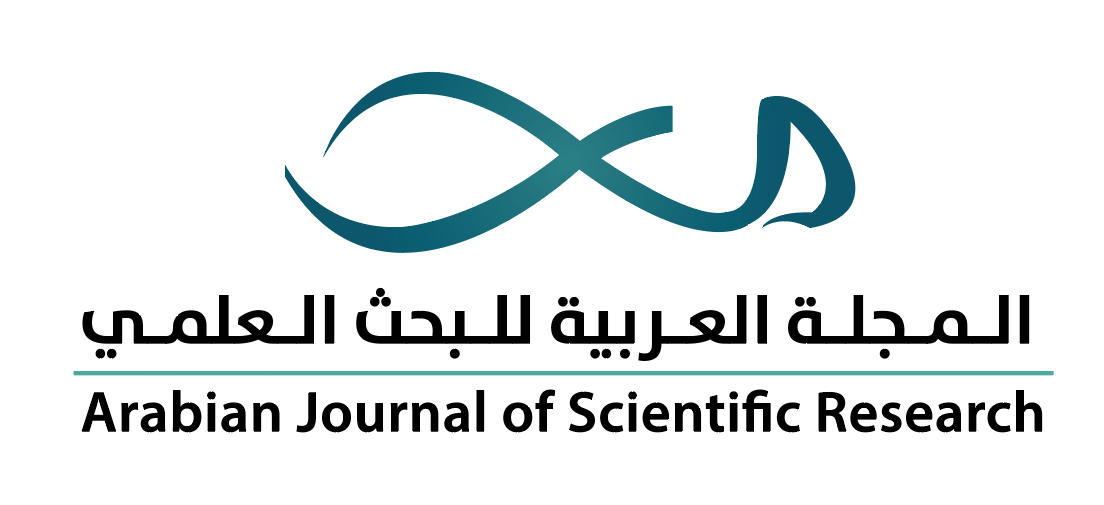Abstract
الملخص
تهدف هذه الدراسة إلى إجراء فحص السمّية الحادة في ذكور الفئران لكل من الكادميوم ونماذج من المبيدات الحشرية الفسفورية العضوية والكارباميتية المثبطة لإنزيم الكولين إستيريز، وتداخلها مع الكادميوم في مستويات الجُرع المميتة الوسطية خلال 24 ساعة (الجم-50 LD50)، وتحليل الآيزوبولوغرام (Isobologram Analysis)، ومؤشر التداخل السمّي (Toxicity Index). بلغت الجم-50 للكادميوم في الفئران 8.6 ملغم/كغم (mg/kg) من وزن الجسم بالحقن في الخلب، وأظهرت الفئران المعاملة بالكادميوم علامات التمطّي مع صعوبة الحركة والمشي. وبلغت الجم-50 لكل من المبيدات الحشرية الفسفورية العضوية دايكلورفوس وديازينون وكوموفوس وكلوربايريفوس عن طريق التجريع الفموي "التزقيم" (Gavage) 81.6 و157.6 و192.4 و437.1 ملغم/كغم من وزن الجسم، على التوالي، في حين بلغت الجم-50 لمبيدَي الكارباميت كارباريل وميثوميل عن طريق الفم 940.2 و177.5 ملغم/كغم من وزن الجسم، على التوالي. وأظهرت الفئران المتسممة بهذه المبيدات علامات الإلعاب والتدمع وانتصاب الشعر والذيل والتمدد على أرضية القفص والتحزم العضلي (Muscle Fasciculation) والرجفة والاختلاج العصبي وصعوبة التنفس، ومن ثم الموت خلال 24 ساعة من التجريع. وعند حقن الكادميوم في الخلب قبل المبيدات الحشرية بنصف ساعة، انخفضت قيم الجم-50 (زيادة السمّية) لكل من الكادميوم (51.4 - 74%) والمبيدات الحشرية (48.3 - 86.8%) مقارنة بقيمها بعد إعطائها لوحدها في الفئران. وقد بيّن تحليل الآيزوبولوغرام للتداخل السمّي بين الكادميوم والمبيدات الحشرية أن نوع التداخل كان تآزريًا (Synergistic)، ودلّ مؤشر التداخل بين الكادميوم والمبيدات الحشرية جميعها على أن التداخل كان تآزريًا أيضًا لكون قيمه أقل من واحد. وتشير هذه النتائج إلى احتمالية حصول تداخل سمّي بين الكادميوم مع المبيدات الحشرية الفسفورية العضوية والكارباميتية، إذْ سبّب إعطاء هذه المركبات في الفئران بجرع سامة وحادة تداخلًا سمّيًا حادًا من النوع التآزري الذي تم الكشف عنه وفق تجارب الجرع المميتة الوسطية وتحليل الآيزوبولوغرام ومؤشر التداخل السمّي.
The purpose of this study was to examine in male mice the acute toxicity of cadmium and representative organophosphate and carbamate cholinesterase inhibiting insecticides and their interaction at the levels of the 24 h median lethal dose (LD50), isobologram analysis and toxicity index. The LD50 value of cadmium was 8.6 mg/kg of body weight, intraperitoneally. Cadmium-treated mice showed writhing responses with difficulty in movement and walking. The oral LD50 values the organophosphate insecticides dichlorvos, diazinon, cuomaphos, chlorpyrifos were 81.6, 157.6, 192.4 and 437.1 mg/kg of body weight, respectively; whereas those of the carbamate insecticides carbaryl and methomyl were 940.2 and 177.5 mg/kg of body weight, respectively. Mice intoxicated with insecticides showed signs of salivation, lacrimation, piloerection, straub tail, flat body appearance, muscle fasciculation, tremor, convulsion, dyspnea followed by death within 24 of oral dosing. When cadmium was injected 30 min before the insecticide dosing, the LD50 values of cadmium and those of the insecticides decreased (increased toxicity) by 51.4 to 74% and 48.3 to 86.8%, respectively, in comparison to their individual LD50 values in mice. Isobologram analysis revealed that the toxic interaction between cadmium and the insecticides was synergistic. The toxicity index also indicated that the interaction between cadmium and the insecticides was synergistic because its values were < 1. These results suggest that administering cadmium with organophosphate and carbamate insecticides at acute toxic doses in mice causes acute synergistic toxic interaction as identified by the LD50 experiments, isobologram analysis and toxicity index.
© 2022 [Author(s)], licensee HBKU Press.

Article metrics loading...
/content/journals/10.5339/ajsr.2022.9
2022-10-31
2024-04-25

Full text loading...
/deliver/fulltext/ajsr/2022/2/ajsr.2022.9.html?itemId=/content/journals/10.5339/ajsr.2022.9&mimeType=html&fmt=ahah

